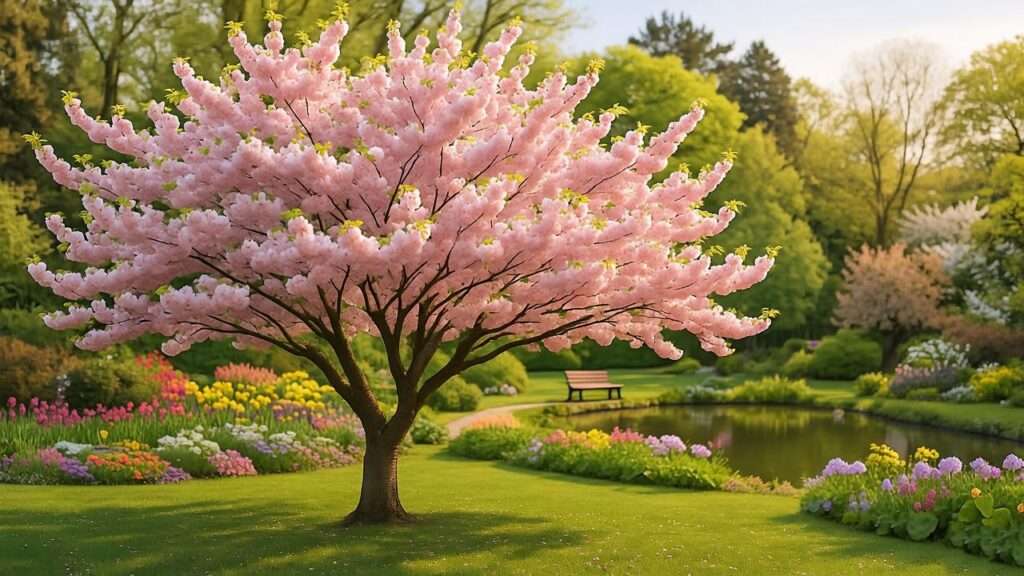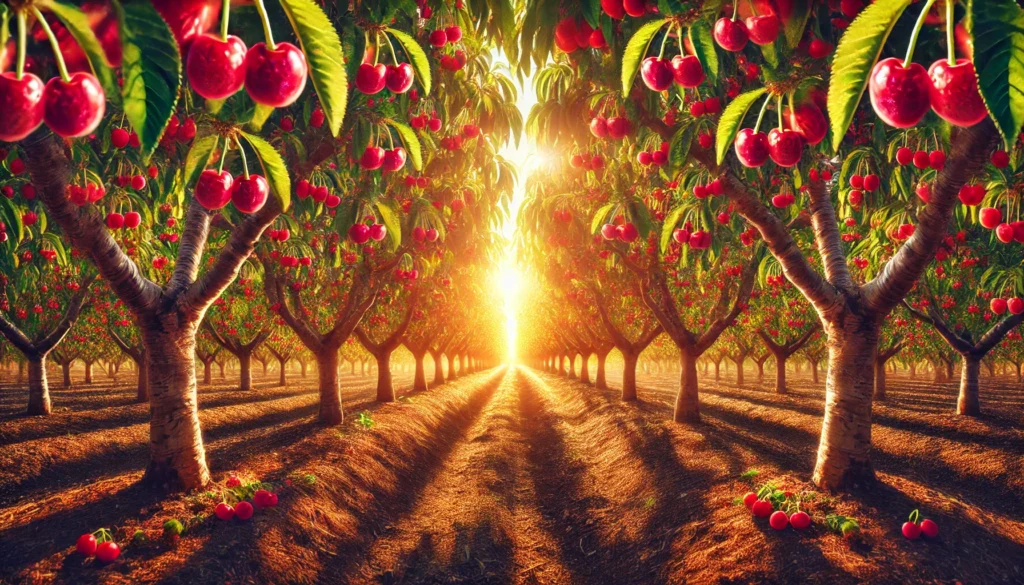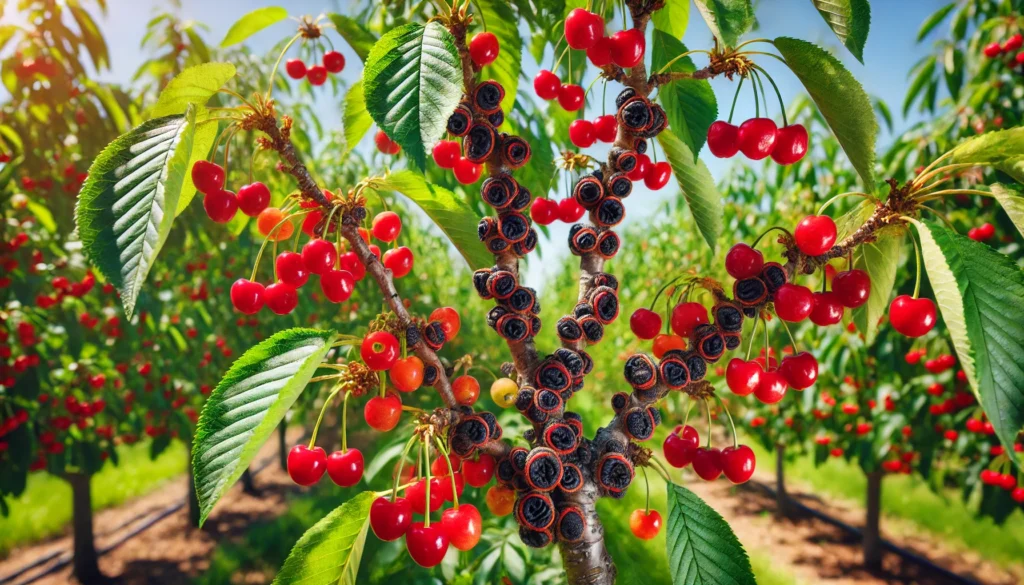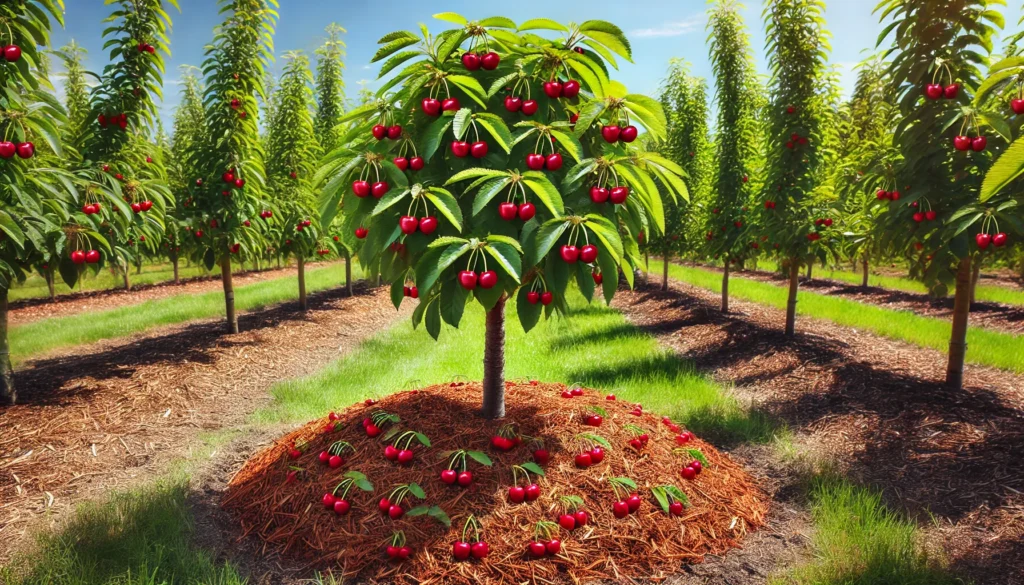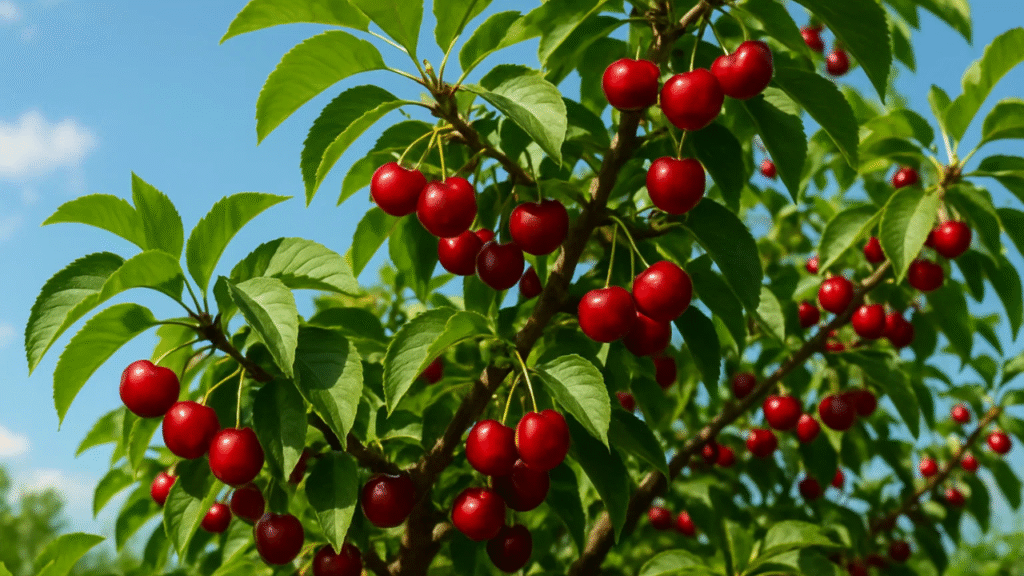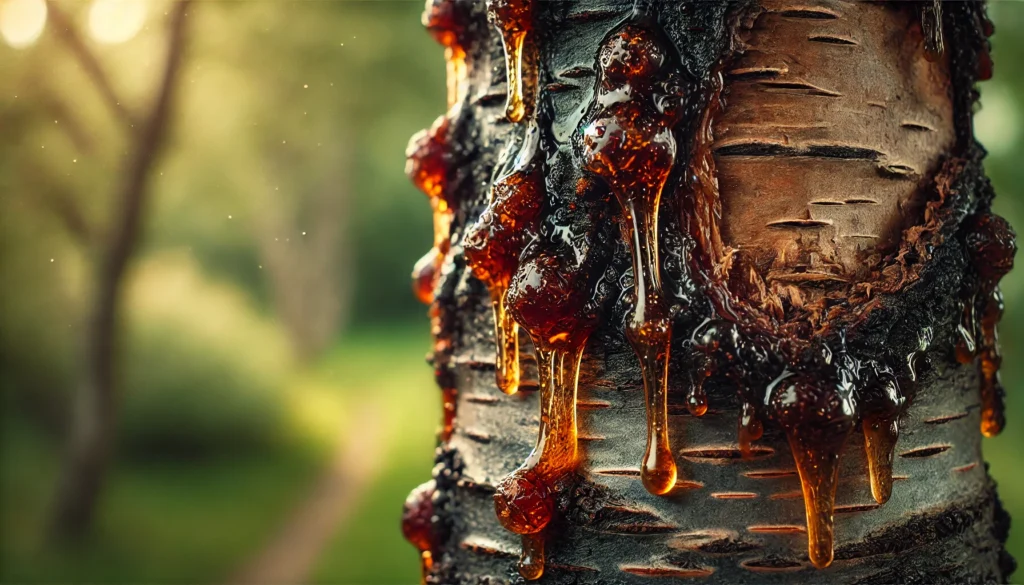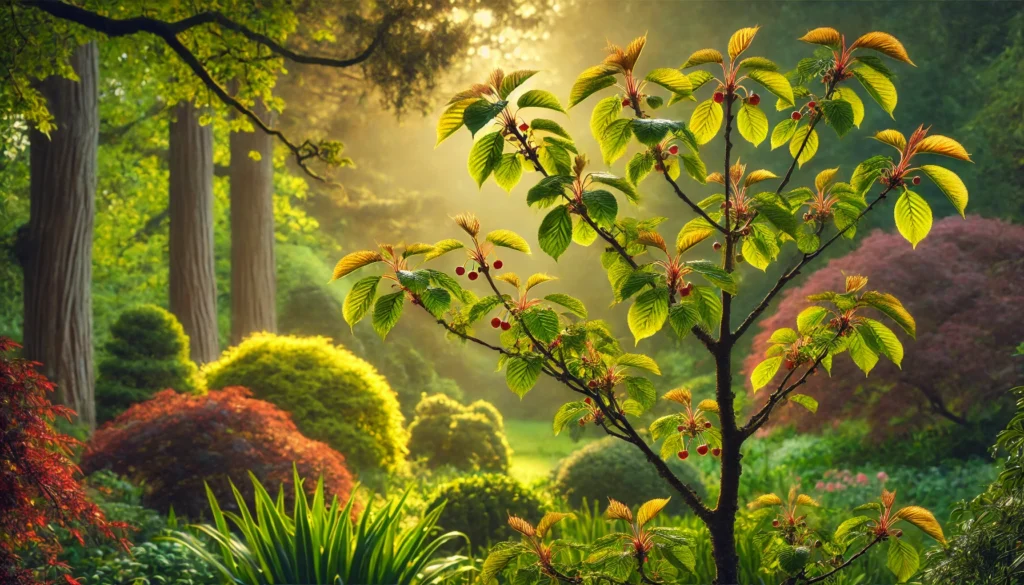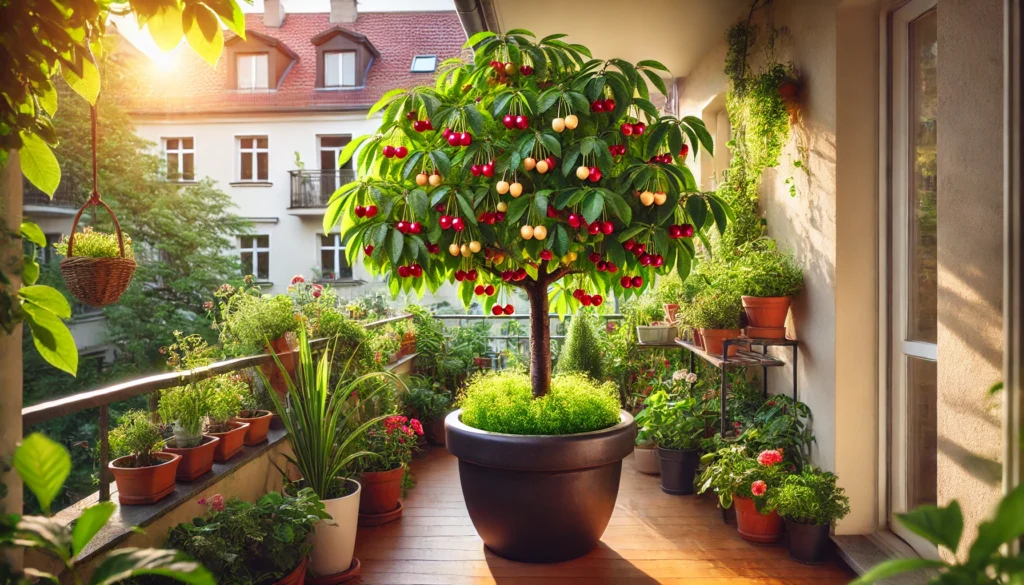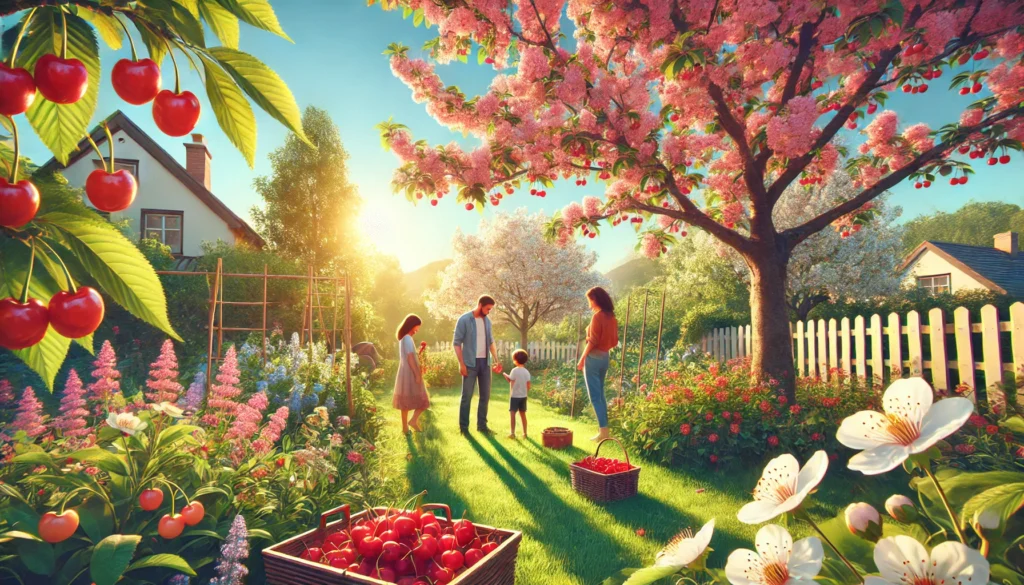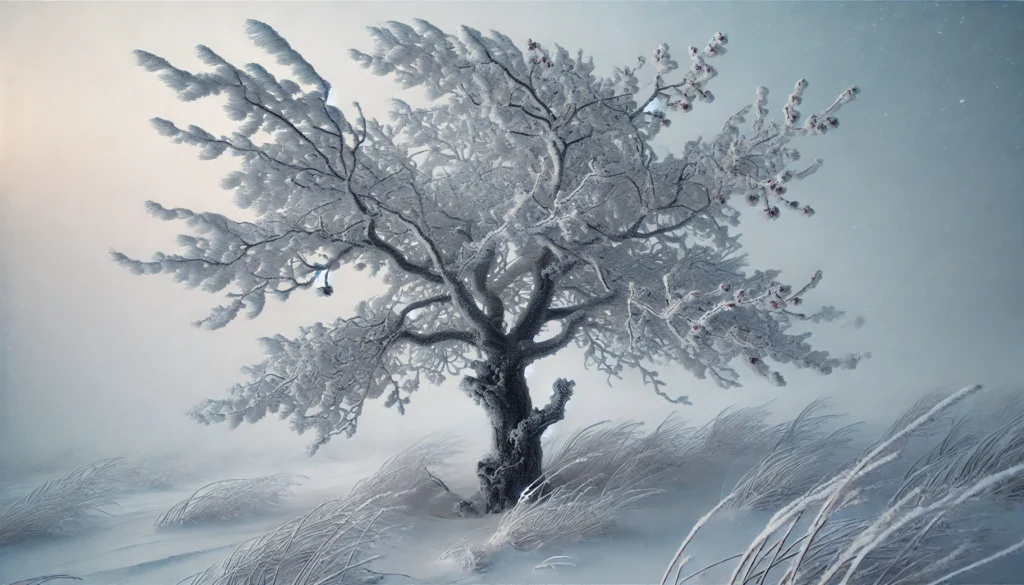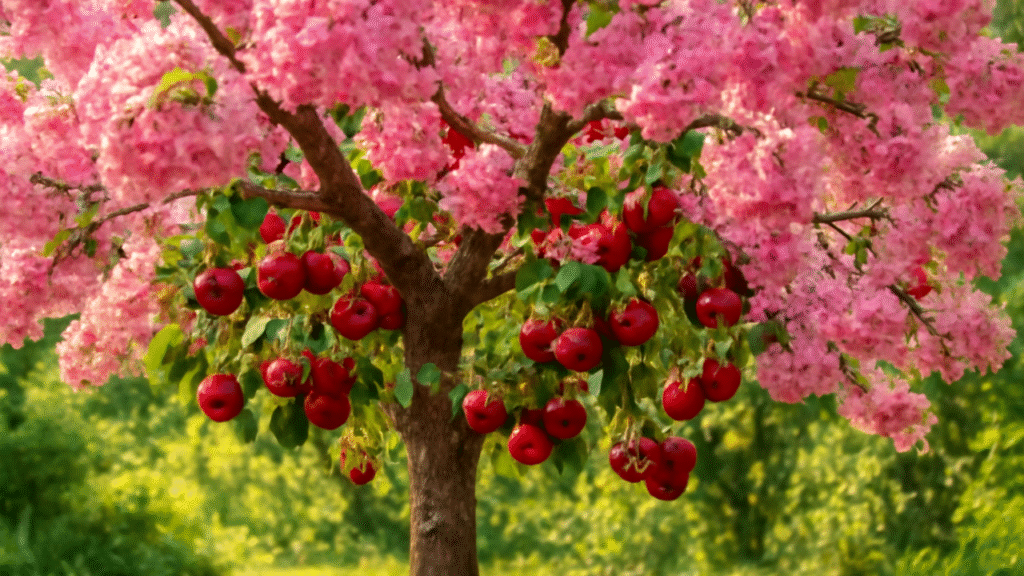Imagine your garden adorned with the breathtaking blooms of a cherry wood tree, its delicate pink petals dancing in the spring breeze. 🌸 Whether you’re a seasoned gardener or a beginner, growing a cherry wood tree (Prunus spp.) can transform your landscape into a vibrant masterpiece. These iconic trees, celebrated for their stunning blossoms and ecological benefits, are a favorite for homeowners and plant enthusiasts alike. In this comprehensive guide, we’ll share expert-driven advice to help you plant, nurture, and maintain a thriving cherry wood tree. Backed by over a decade of horticultural expertise, this article covers everything from choosing the right variety to troubleshooting common issues, ensuring your tree flourishes for years to come. 🌿
Understanding the Cherry Wood Tree 🌿
What Is a Cherry Wood Tree?
Cherry wood trees, belonging to the Prunus genus, encompass a diverse group of deciduous trees known for their spectacular spring blooms and, in some cases, delicious fruit. Popular species include Prunus serrulata (Japanese cherry) for ornamental beauty and Prunus avium (wild cherry) for fruit production. These trees typically grow 15–50 feet tall, with glossy green leaves that turn vibrant shades of orange and red in fall. Their wood is prized for furniture, and their blossoms attract pollinators like bees and butterflies. 🌺 Culturally, cherry wood trees hold significance in events like Japan’s cherry blossom festivals, symbolizing renewal and beauty.
Why Choose a Cherry Wood Tree for Your Garden?
Cherry wood trees are a fantastic addition to any landscape. Their spring blossoms create a stunning focal point, while their shade and fruit (for certain varieties) add practical value. These trees thrive in various climates (USDA Hardiness Zones 4–8), making them versatile for many regions. They also support local ecosystems by providing nectar for pollinators and habitat for birds. Whether you’re aiming for a show-stopping ornamental or a productive fruit tree, cherry wood trees deliver both aesthetic and functional benefits. 🌳
Preparing to Plant Your Cherry Wood Tree 🌱
Choosing the Right Variety
Selecting the right cherry wood tree variety is crucial for success. Ornamental varieties like ‘Kwanzan’ and ‘Yoshino’ are prized for their double blooms and vibrant colors, ideal for landscaping. Fruit-bearing varieties like ‘Bing’ or ‘Stella’ offer sweet cherries but require cross-pollination for optimal yield. Consider your climate, available space, and goals (aesthetic vs. productive). For colder regions, choose cold-hardy cultivars like ‘Meteor’ or ‘North Star.’ Consult local nurseries or extension services to find varieties suited to your USDA zone. 🌞
Selecting the Perfect Location
Cherry wood trees thrive in full sun (6–8 hours daily) and well-drained, loamy soil with a pH of 6.0–7.0. Test your soil with a home kit to ensure proper conditions. Avoid low-lying areas prone to waterlogging, as cherry trees are susceptible to root rot. Ensure the site has enough space for the tree’s mature size, keeping it at least 15–20 feet from structures or other trees to prevent crowding. A south-facing slope is ideal for maximizing sunlight and air circulation. 🌍
Best Time to Plant
Plant cherry wood trees in early spring or fall to allow roots to establish before extreme weather. In colder climates (Zones 4–5), spring planting minimizes frost damage, while fall is ideal for milder regions (Zones 6–8). Check your local frost dates to time planting accurately. Prepare the site by clearing weeds and amending soil with compost to boost fertility. 🕰️
Step-by-Step Planting Guide 🌳
Tools and Materials Needed
To plant your cherry wood tree, gather:
- Shovel for digging
- Organic compost or aged manure
- Mulch (wood chips or bark)
- Stakes and ties for support
- Watering can or hose with a gentle nozzle
Optional: A soil pH tester and slow-release fertilizer (10-10-10 NPK).
Planting Process
- Dig the Hole: Create a hole twice as wide and as deep as the root ball (typically 18–24 inches). Loosen the soil to encourage root growth.
- Prepare the Tree: Inspect roots for damage and soak bare-root trees in water for 1–2 hours before planting.
- Position the Tree: Place the tree in the hole, ensuring the root collar is level with the ground. Spread roots evenly.
- Backfill and Water: Fill the hole with a mix of native soil and compost, tamping gently. Water thoroughly to settle the soil.
- Mulch: Apply a 2–3 inch layer of mulch around the base, keeping it 2 inches from the trunk to prevent rot.
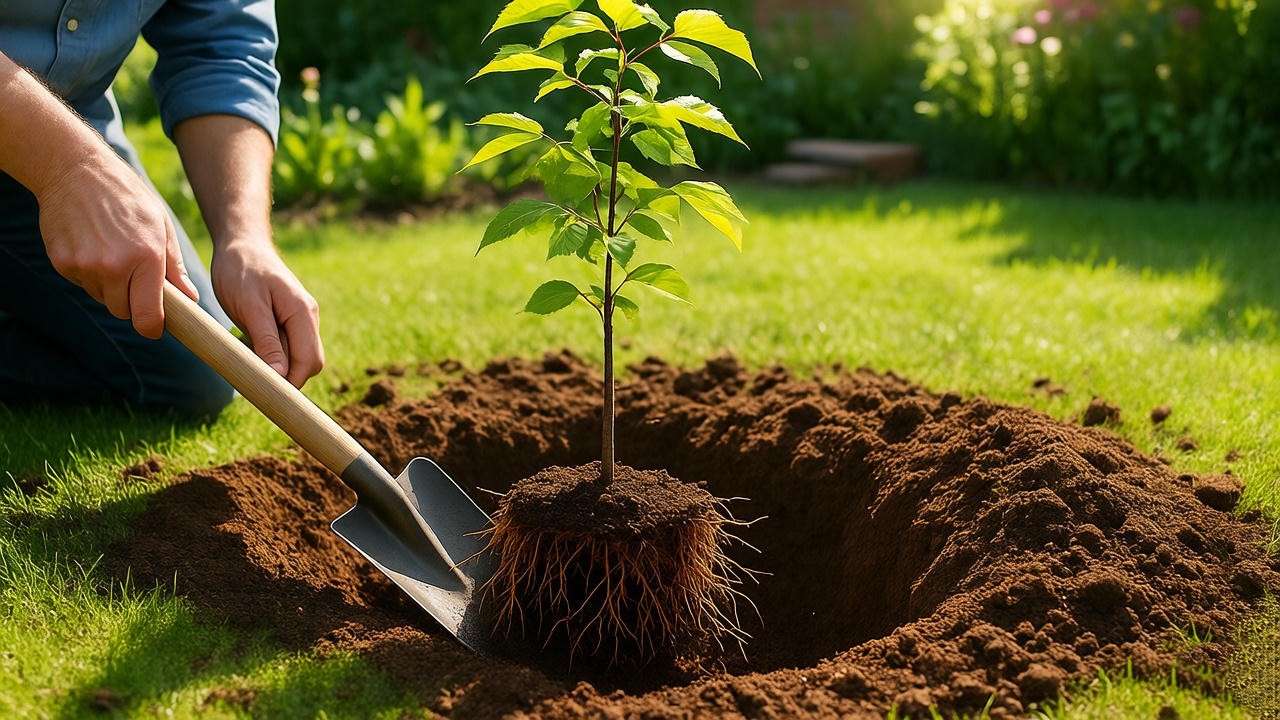
Post-Planting Care
Water deeply (1–2 gallons) weekly for the first month, adjusting based on rainfall. Stake young trees to protect against wind, ensuring ties are loose to avoid girdling. Monitor for signs of stress (wilting leaves or yellowing) and protect from pests like deer with netting or fencing. 🌧️
Essential Care Tips for Cherry Wood Trees 🌞
Watering Needs
Consistent moisture is critical, especially during the first two years. Water young trees weekly with 1–2 gallons, ensuring the soil stays moist but not soggy. Mature trees need less frequent watering, typically every 2–3 weeks during dry spells. Use a soaker hose for deep root hydration. Overwatering can lead to yellowing leaves, while underwatering causes wilting or leaf drop. Check soil moisture by digging 2 inches deep; if dry, water immediately. 💧
Fertilizing for Optimal Growth
Apply a balanced fertilizer (10-10-10) in early spring before bud break and again in mid-summer for young trees. Use 1–2 pounds per tree, spread evenly around the drip line. Organic options like compost or fish emulsion work well for sustainable care. Avoid fertilizing in late summer to prevent tender growth before winter. Over-fertilization can cause excessive leaf growth at the expense of blooms or fruit, so follow package instructions carefully. 🌿
Pruning for Health and Aesthetics
Prune cherry wood trees in late winter or early spring to remove dead, damaged, or crossing branches. Use clean, sharp shears to make angled cuts just above a bud. For ornamental trees, shape to enhance airflow and light penetration, promoting vibrant blooms. For fruiting varieties, thin crowded branches to boost fruit quality. Avoid heavy pruning in summer, as it can stress the tree. Always sanitize tools to prevent disease spread. ✂️
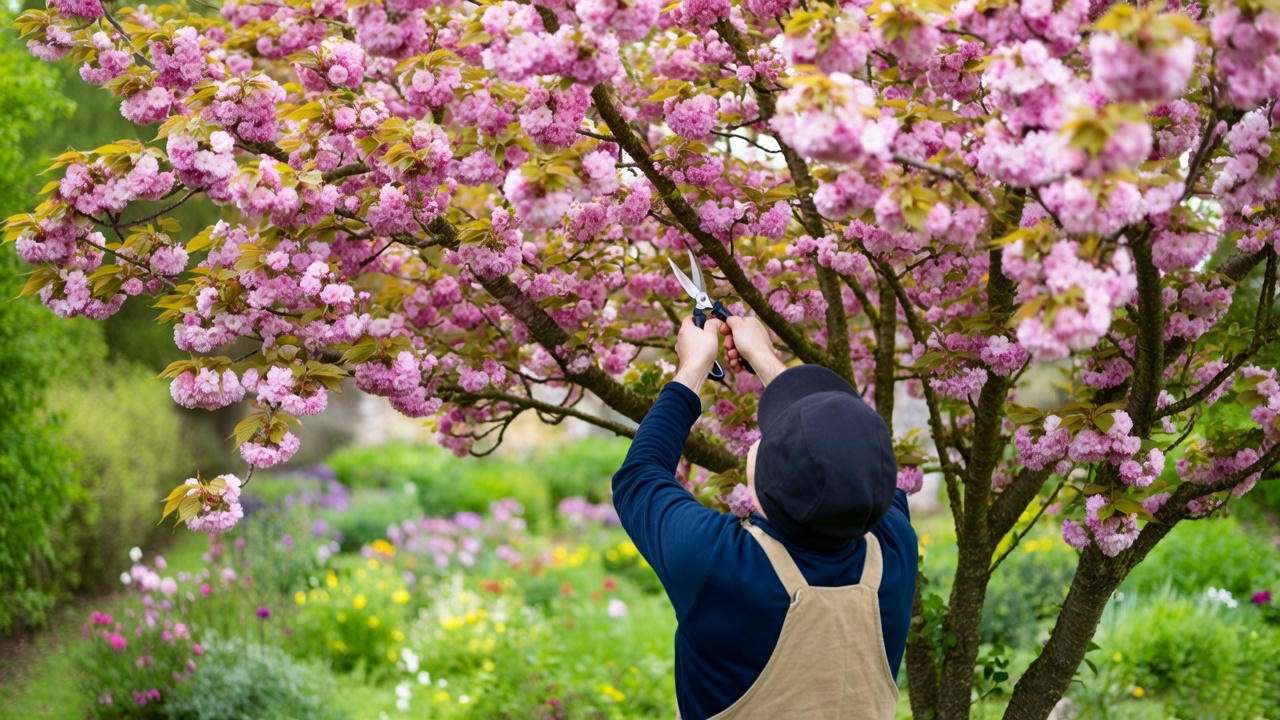
Mulching and Soil Maintenance
Apply a 2–3 inch layer of organic mulch annually to retain moisture, suppress weeds, and regulate soil temperature. Refresh mulch in spring, keeping it away from the trunk to avoid rot. Test soil every 2–3 years to monitor pH and nutrient levels, amending with lime or sulfur as needed. Aerate compacted soil to improve drainage and root health. 🌱
Protecting Your Cherry Wood Tree from Pests and Diseases 🐞
Common Pests
Cherry wood trees face threats from aphids, Japanese beetles, and cherry fruit flies. Aphids cause curled leaves; control them with insecticidal soap or neem oil. Japanese beetles skeletonize foliage; hand-pick or use traps sparingly to avoid attracting more. Cherry fruit flies affect fruiting varieties; use sticky traps and remove fallen fruit to reduce infestations. Companion plants like marigolds or garlic can deter pests naturally. 🕷️
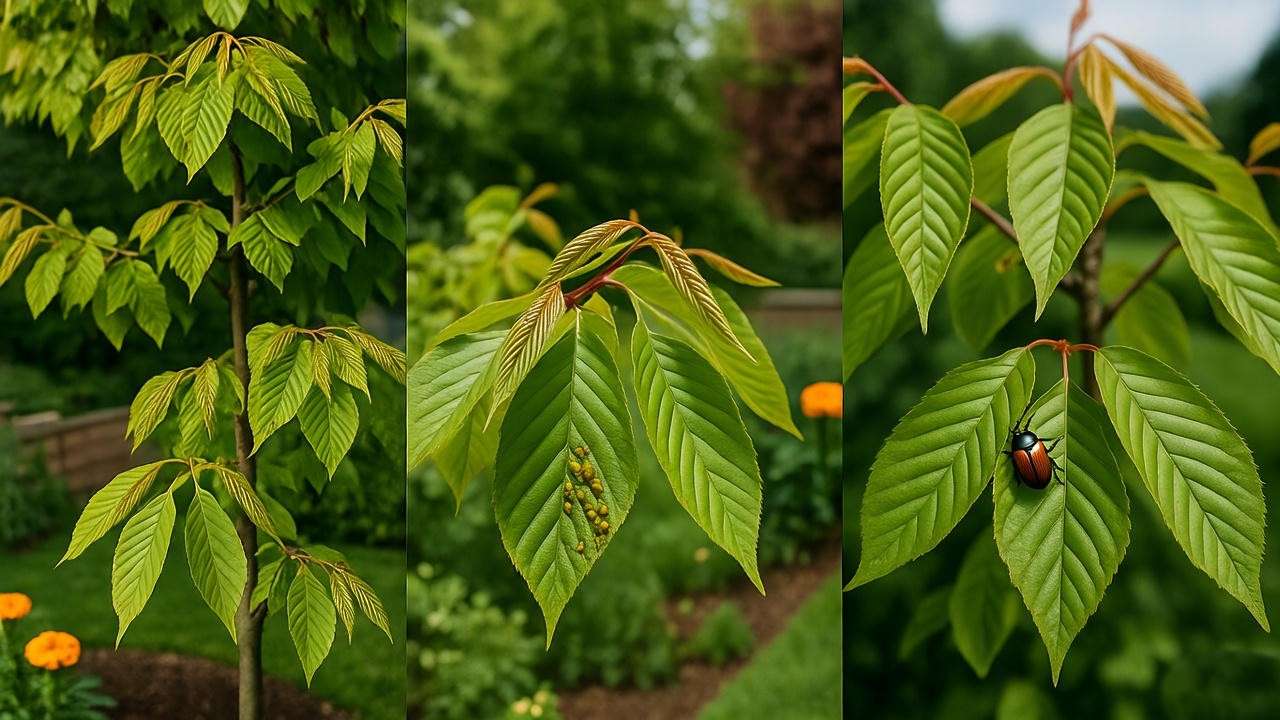
Common Diseases
Watch for black knot (dark, warty growths on branches), powdery mildew (white coating on leaves), and brown rot (rotting fruit or blossoms). Remove and destroy affected branches for black knot, and apply sulfur-based fungicides for mildew and rot. Prevent diseases by ensuring good air circulation, avoiding overhead watering, and cleaning up debris. Regular inspections catch issues early. 🩺
Winter Protection
In colder zones, wrap trunks with burlap to prevent sunscald and rodent damage. Apply a thick mulch layer (4–6 inches) around the base to insulate roots. For young trees, use tree guards to shield against frost cracks. Remove heavy snow from branches to prevent breakage. In spring, check for winter damage and prune as needed. ❄️
Maximizing Blooms and Fruit Production 🌸🍒
Encouraging Vibrant Blooms
The hallmark of a cherry wood tree is its breathtaking spring blossoms, a sight that captivates gardeners and passersby alike. To ensure a spectacular bloom display, prioritize three key factors: sunlight, pruning, and nutrition. Cherry wood trees need at least 6–8 hours of direct sunlight daily to fuel flower bud formation. Prune strategically in late winter, removing crowded branches to allow light and air to reach the inner canopy. Apply a balanced fertilizer (10-10-10 NPK) in early spring to provide essential nutrients like phosphorus, which supports blooming. For ornamental varieties like ‘Kwanzan’ or ‘Yoshino,’ consider planting pollinator-friendly flowers like lavender or bee balm nearby to attract bees, enhancing pollination and bloom vibrancy. Avoid excessive nitrogen, which can lead to lush foliage at the expense of flowers. Regular soil testing ensures optimal conditions for a dazzling floral show. 🌺
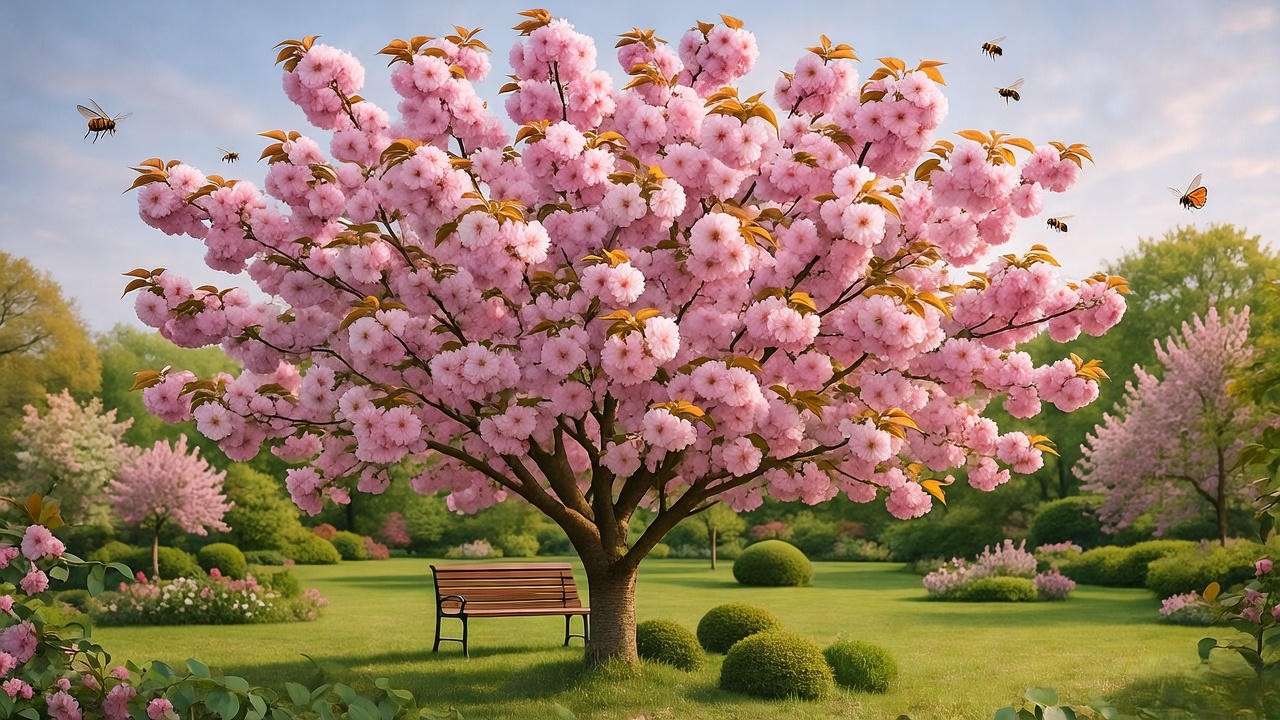
Supporting Fruit-Bearing Trees
For fruiting cherry wood trees like ‘Bing’ or ‘Stella,’ proper care can yield a bountiful harvest of sweet, juicy cherries. Most fruiting varieties require cross-pollination, so plant at least two compatible cultivars within 50 feet of each other. For example, ‘Bing’ pairs well with ‘Rainier’ or ‘Black Tartarian.’ Check with local nurseries for pollinator compatibility. Thin fruit clusters in early summer, leaving 1–2 cherries per spur to improve size and quality while reducing branch strain. Harvest cherries when fully ripe—typically mid-to-late summer—when they’re firm, glossy, and rich in color. Protect fruit from birds using netting or reflective tape. Regular watering and mulching are critical during fruit development to prevent cracking or small, dry fruit. 🍒
Troubleshooting Common Cherry Wood Tree Problems 🔧
Why Isn’t My Tree Blooming?
Few things are more disappointing than a cherry wood tree that fails to bloom. Common culprits include insufficient sunlight, improper pruning, or nutrient imbalances. If your tree is in partial shade, consider relocating it or trimming nearby obstructions. Over-pruning or pruning at the wrong time (e.g., late summer) can remove next season’s flower buds, so stick to late winter pruning. Nutrient deficiencies, particularly low phosphorus or potassium, can inhibit blooming; test your soil and apply a balanced fertilizer if needed. Young trees may take 3–5 years to mature enough to bloom, so patience is key. If the issue persists, consult a local arborist to rule out root damage or disease. 🌿
Yellowing Leaves or Stunted Growth
Yellowing leaves or stunted growth often signal environmental stress or care issues. Overwatering or poor drainage can cause root rot, leading to yellow, wilting leaves; ensure soil drains well and adjust watering to once weekly for established trees. Nutrient deficiencies, such as low nitrogen or iron, can also cause yellowing; apply a slow-release fertilizer or chelated iron as needed. Pests like aphids or spider mites may weaken the tree, so inspect leaves and treat with neem oil if infestations are present. Compacted soil can restrict root growth, so aerate annually to improve oxygen flow. Regular monitoring and early intervention keep your tree thriving. 🩺
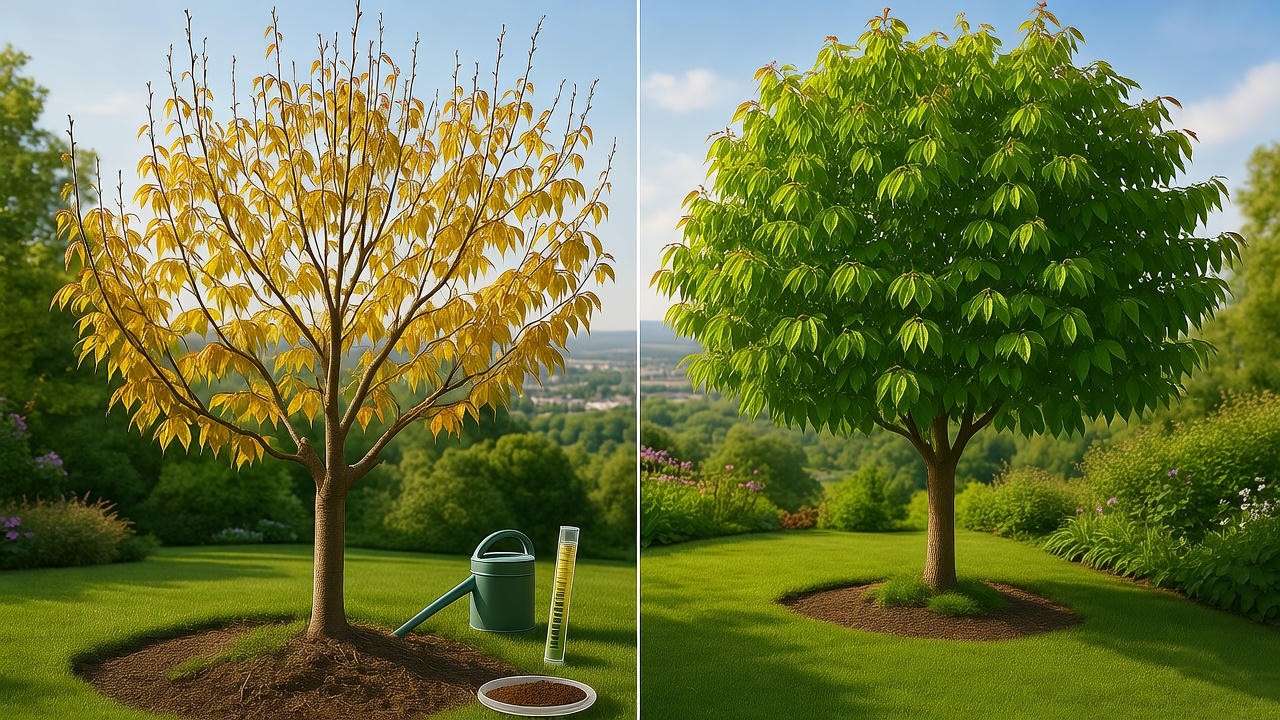
Dealing with Environmental Stress
Cherry wood trees are sensitive to extreme weather, such as drought, heat, or heavy rain. During drought, water deeply every 10–14 days to maintain soil moisture. In hot climates, apply mulch to keep roots cool and reduce evaporation. Poor drainage can suffocate roots, so avoid planting in clay-heavy or low-lying areas. If heavy rain causes pooling, improve drainage with raised beds or soil amendments like compost. For long-term resilience, choose drought-tolerant varieties like ‘Stella’ for arid regions or cold-hardy cultivars like ‘North Star’ for northern climates. Monitor weather forecasts and adjust care accordingly. 🌦️
Expert Tips for Long-Term Success 🌟
To ensure your cherry wood tree thrives for decades, follow these expert-backed strategies:
- Seasonal Care Checklist: In spring, fertilize and prune; in summer, monitor for pests and water consistently; in fall, mulch and clean up debris; in winter, protect against cold damage.
- Companion Planting: Pair cherry trees with plants like chives or nasturtiums to repel pests naturally while attracting pollinators.
- Arborist Insights: Avoid common mistakes like planting too deep or neglecting soil tests. Invest in professional soil analysis every few years to maintain optimal conditions.
- Sustainable Practices: Use drip irrigation to conserve water and opt for organic fertilizers to reduce environmental impact. Collect rainwater for irrigation during dry spells.
These practices, drawn from years of horticultural experience, maximize your tree’s health and beauty while minimizing maintenance challenges. 🌳
FAQs About Cherry Wood Tree Care ❓
Q1: How long does it take for a cherry wood tree to bloom?
Most cherry wood trees bloom within 3–5 years of planting, depending on the variety and growing conditions. Ornamental varieties may bloom sooner, while fruiting trees take longer to reach maturity. Ensure proper sunlight and pruning to encourage early blooming.
Q2: Can cherry wood trees grow in containers?
Yes, dwarf varieties like ‘North Star’ or ‘Stella’ can thrive in large containers (15–20 gallons) with well-drained soil. Ensure adequate sunlight, regular watering, and annual repotting or root pruning to maintain health.
Q3: What’s the best way to protect my tree from pests naturally?
Plant companion species like marigolds or garlic to deter pests. Use neem oil or insecticidal soap for mild infestations, and introduce beneficial insects like ladybugs to control aphids.
Q4: How do I know if my cherry tree is healthy?
A healthy cherry wood tree has vibrant green leaves, steady growth, and abundant blooms or fruit. Watch for warning signs like wilting, yellowing, or sparse foliage, and address issues promptly.
Q5: Are cherry wood trees high-maintenance?
With proper care, cherry wood trees are moderately low-maintenance. Regular watering, annual pruning, and pest monitoring keep them healthy without excessive effort.
Conclusion
Growing a cherry wood tree is a rewarding journey that brings beauty, shade, and even fruit to your garden. By choosing the right variety, planting correctly, and following expert care tips, you can enjoy vibrant blooms and healthy growth for years. From proper watering to proactive pest management, this guide equips you with everything needed to cultivate a thriving cherry wood tree. 🌸 Start your tree-growing adventure today and share your progress with our gardening community! For more tips, explore our articles on soil health, pruning techniques, and sustainable gardening. 🌳

